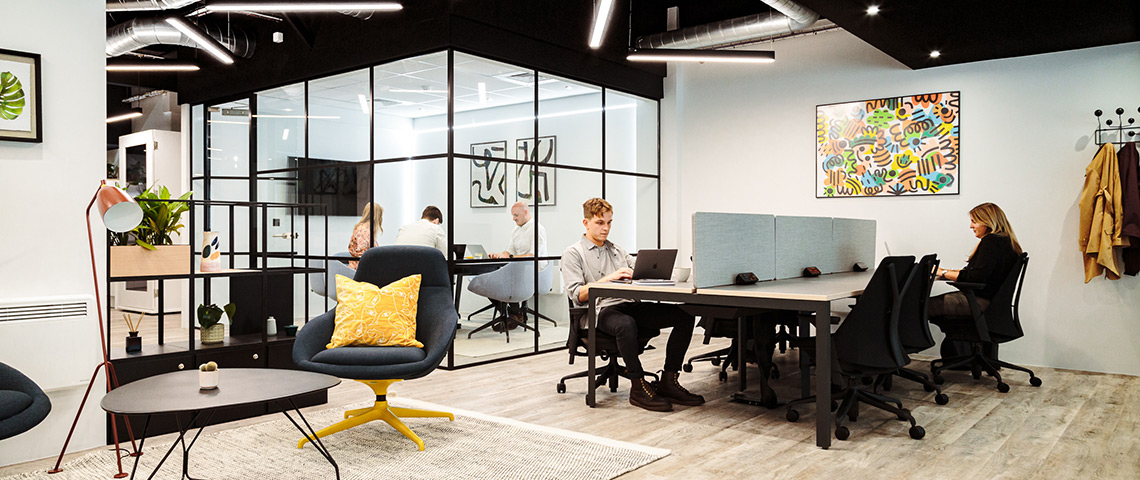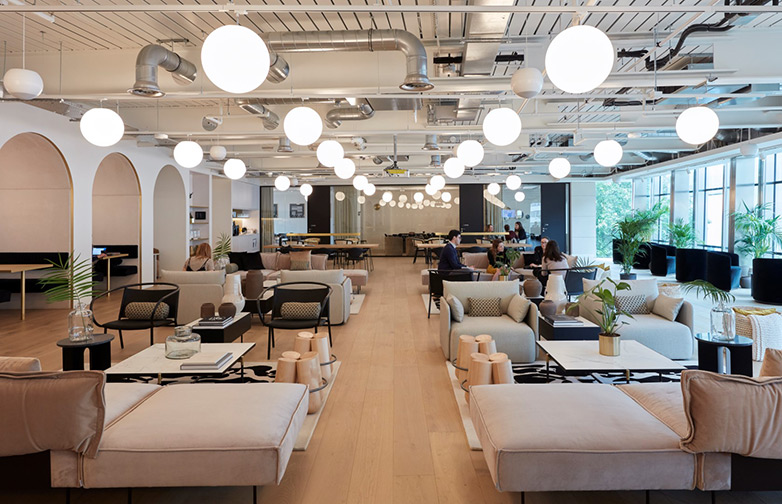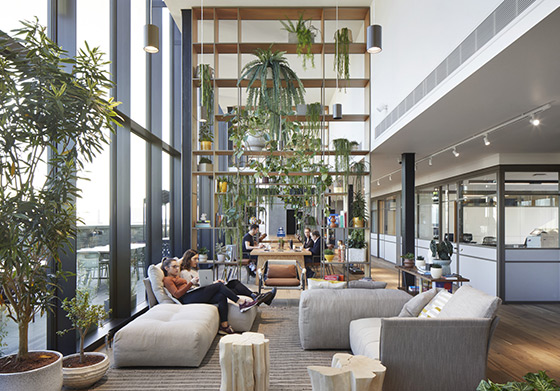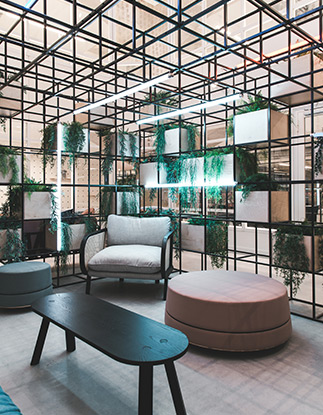
What place do flexible office have next to retail?
Where does the demand come from?
Savills FLEX advisory team are currently working with co-working operators considering shared spaces as small as 5,000 sq ft. In the UK 22.7 million sq ft of retail space is currently vacant in units larger than 5,000 sq ft and over 150 towns across the UK, from Stevenage, to Sunderland have at least 50,000 sq ft of such space. The vast amount of empty space on our high streets presents an opportunity for re-purposing to new uses, with co-working considered as one of the prime contenders. Why is there such an opportunity for co-working to help re-invigorate our high streets?
Covid-19 has been a catalyst for accelerating several trends in the workplace, many of which were already underway prior, including the blending of retail and workspaces together. Several consumer trends are aligning that make this an attractive proposition: goods and services on demand; blended ‘day parts’; blended home, working and social lives; desire for sense of Place and community; need for social integration, but less travel. All of which means we need more mixed uses and a focus on placemaking.
Long term structural change in retail has resulted in many large units, often ex-department stores, becoming redundant or marginalized due to pitch shift, or a general declining need for retail space. Unused retail space provides an opportunity as much of the urban fabric is already there.
However, if we can reduce exposure to retail where it is no longer needed and bring in alternative uses, we have the opportunity to revitalize these areas and make them more akin to town centres of old, where people would live, work and play.
The flexible workspace model is already proving to sit well with retail and being used as an alternative use in units that have become marginalised and redundant – for the benefit of the place as a whole. Having a range of resources within easy reach, such as shops, restaurants and entertainment facilities, are a magnet for new office tenants.
Like many trends that started in the most prominent cities, flexible working is filtering down to regional towns across the country and is providing a shot in the arm for retail centres that suffer from high voids and falling footfall.

Who’s doing it?
Take Stockport, which has struggled with high retail vacancy for several decades, largely on the back of over development of out of town retail. In 2018 Marks & Spencer closed its store, which had the potential to leave a large blight on the high street as low retail occupational demand in the town would have made re-letting the space a significant challenge. However, while Stockport is over supplied for retail it is undersupplied for offices and developer Glenbrook have seized the opportunity to access a significant floorplate in the heart of the town centre. The new scheme, STOK, will increase footfall and further diversify the town centre. Instead of standing empty, shoppers will see the historic building remain an important part of the community.
This isn’t the first time a large empty department store has provided a catalyst for regeneration.
A former 80,000 sqft Grade II listed Co-op department store in Sheffield that was once at the heart of the city centre’s retail offer closed its doors in 2008 as the retail pitch lost relevance and became marginalised. A decade later following a £3m funding deal between the City Council and regeneration company U+I has seen life breathed into this once dilapidated but iconic building. The development comprises a number of key parts that co-exist to create an exciting destination. A flexible working environment delivered through Kollider Incubator is specifically designed for businesses and ambitious entrepreneurs to scale quickly. At the heart of the developers’ ethos was the need to provide a catalyst for regeneration in the
wider locality. The curation of food hall Kommune has the core aim of providing a public focussed use to increase visits and socialising in the building and now attracts 7,000 visitors a week. Since opening, new operators have moved into the area and neighbouring buildings are being refurbished for a variety of uses from offices to residential.

Shopping centre owner Ellandi has a talent for re-energising its schemes through creative curation of space and are not averse to considering alternative uses. Workspaces in particular are seen to align well with the ethos of community shopping environments. In the Marlands Shopping Centre, Southampton, a vacant unit previously occupied by Matalan has been repurposed into the city’s first collaborative, co-working environment, powered by Barclays Eagle Lab.
In the Merrion Centre, Leeds, Town Centre Securities has taken an unlettable unit and opened a free workspace environment for visitors to “meet, connect and charge”. This provides flexible offices in a ‘pop up environment that fills empty space and gives the landlord time to consider a long-term solution for the unit.
Retailers are also reviewing their space requirements and many with larger stores are turning to flexible offices as a complementary use within their buildings. Overseas examples include Staples providing co-working space in U.S. suburban locations under its Workbar brand, and Carrefour’s Urban Life supermarkets are offering shared workspace in Milan.
The provision of flexible working space in the retail environment has created a crucial hub for those not working from a fixed office. This provides a different reason for people to visit their local high street and shopping centre, away from the traditional retail and food court visits. Attracting flexible workers increases footfall and encourages spend in nearby stores. It also provides an element of futureproofing as more of the population are expected to move into agile working in the future.
Evolving working behaviour
Will the coronavirus see a step change in the way we work?
One potential outcome is the drive to behavioral change. Becoming used to working with a different group of people, or from anywhere. Businesses will adapt to being remote on their laptops, communicating regularly with their teams via video link and catching up with clients via online meetings will become the norm. And yet, people are likely to have cabin fever from spending so much time at home, while seeking a good cup of coffee or lunch offer. Workthere data in the UK shows that since lockdown, the second highest portion of demand for flex space has come from those seeking suburban space (26% of total demand), either as an individual, or as a company.

As our work, home and social lives have become increasingly entwined in recent years there is more reason than ever to blend different property uses together. This is part of a long term trend, but the Covid-19 situation brings these trends sharply into focus and is likely to accelerate the rate that these changes take place. Employers, workers and consumers will quickly learn new ways of balancing their lives that could stand the test of time, long after the pandemic has passed.
Long term therefore, we expect flexible offices to provide an increasingly important solution for supporting retail spaces. Either way, it looks evident that when different property uses merge they can increase footfall, engagement and vitality, while enhancing the resilience of those locations.

